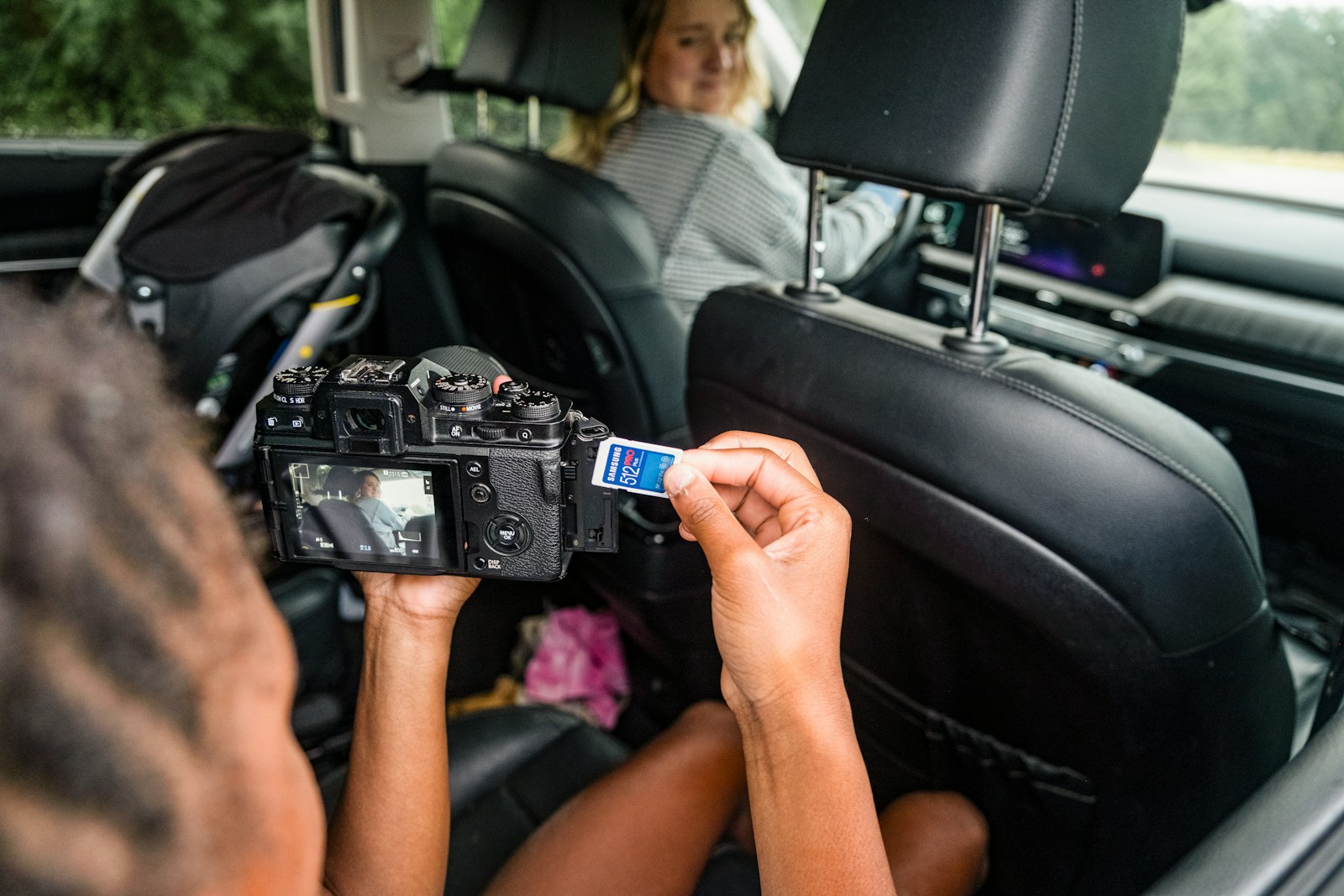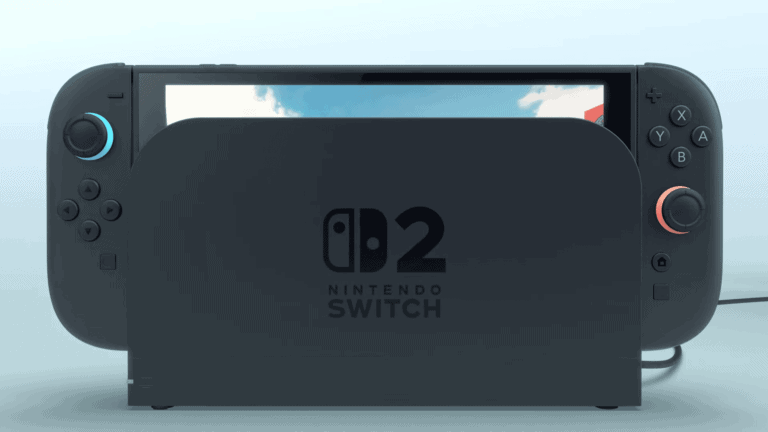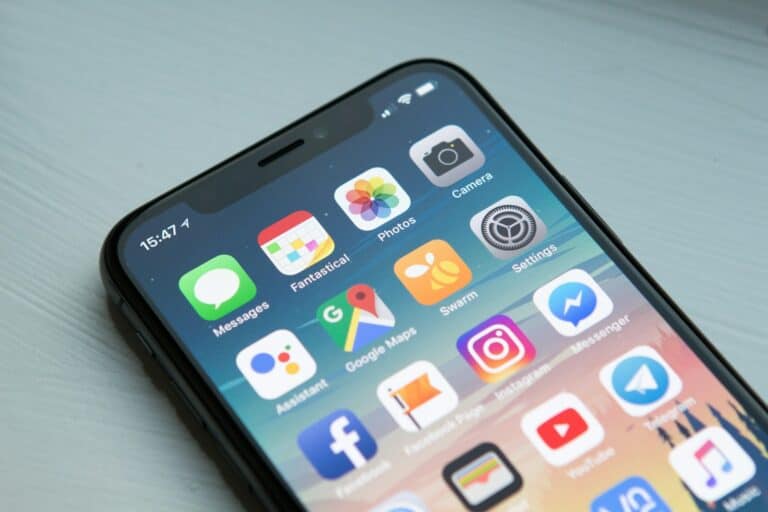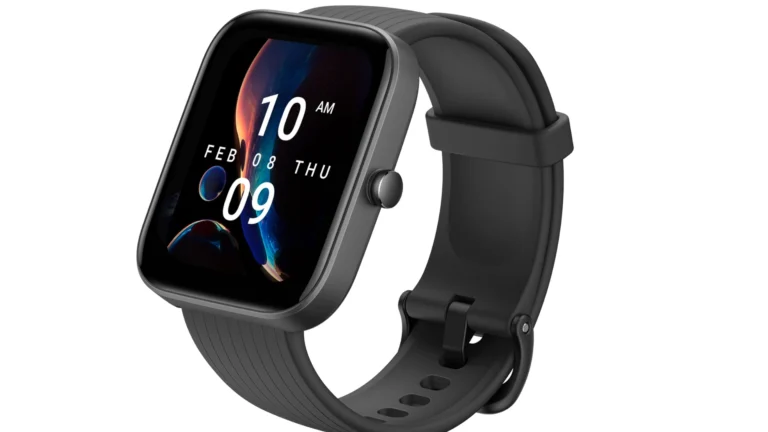
Traveling with technology has become essential for modern explorers, offering convenience and connection no matter where your adventures take you. With the right tech gear and smart practices, you can enhance your travel experience while staying secure, connected, and organized. From protecting your devices on public networks to maximizing battery life during long journeys, a few simple strategies can make all the difference.
Technology should make travel easier, not more complicated. Savvy travelers know that essential tech gear like portable chargers, universal adapters, and lightweight devices can transform a stressful trip into a seamless experience. Before your next adventure, take time to prepare your digital toolkit and learn how to use it efficiently.
1. Prepare Before You Go
- Download offline maps & guides: Use Google Maps, Maps.me, or similar apps to save maps offline for areas with poor connectivity.
- Install translation apps: Tools like Google Translate can help with menus, signs, and conversations. Download offline language packs.
- Back up your data: Store important files, tickets, and IDs in the cloud (Google Drive, iCloud, Dropbox) and keep a local copy on your phone/laptop.
- Update software & apps: Ensures security patches and offline features are ready.
2. Stay Connected Safely
- Use a VPN: Protect your data when using airport, hotel, or café Wi-Fi (source: Travelistia).
- Consider an eSIM or portable hotspot: eSIMs like Airalo or Holafly make it easy to get local data without hunting for SIM cards.
- Turn on two-factor authentication: Helps secure your accounts if devices are lost or stolen.
3. Pack Smart Tech
- Universal travel adapter: Covers multiple plug types in one device.
- Power bank: Keep at least one high-capacity portable charger.
- Noise-canceling headphones/earbuds: Essential for flights and noisy environments.
- Cable organizer: Prevents tangles and keeps chargers accessible.
4. Use Tech to Save Money & Time
- Flight & hotel apps: Hopper, Skyscanner, and Google Flights help find deals.
- Local transport apps: Download rideshare or public transit apps before arrival.
- Currency converter apps: XE or Revolut help you avoid bad exchange rates.
- Digital payment options: Apple Pay, Google Pay, or contactless cards reduce the need for cash.
5. Stay Entertained & Productive
- Download media offline: Netflix, Spotify, Kindle, or podcasts for long transits.
- Travel journaling apps: Day One or Evernote to document your trip.
- Cloud sync: Keep photos and videos backed up automatically to avoid losing memories.
6. Keep Security in Mind
- Track devices: Enable “Find My iPhone” or Google’s “Find My Device.”
- Use RFID-blocking wallets: Protects against digital pickpocketing.
- Lock screens & encrypt devices: Adds another layer of protection.
✅ Pro Tip: Keep a small “tech survival kit” with a power bank, universal adapter, charging cables, and a SIM ejector tool—you’ll use it more than you think!
Key Takeaways
- Protect your data while traveling by using VPNs and enabling two-factor authentication on all important accounts.
- Pack strategically with multi-purpose devices and ensure everything is fully charged and backed up before departure.
- Enhance your journey with travel-specific apps and proper connectivity solutions like local SIM cards or portable Wi-Fi devices.
Understanding the Digital Landscape While Traveling
Navigating technology while traveling requires awareness of both opportunities and risks in our increasingly connected world. Today’s travelers face unique digital challenges that can impact both safety and convenience.
The Importance of Data Security on the Go
When traveling, personal data becomes particularly vulnerable. Cybercriminals often target tourists because they frequently access sensitive information like banking details and travel documents on public networks.
Using a Virtual Private Network (VPN) should be considered essential rather than optional. A VPN encrypts internet traffic, creating a secure tunnel for data transmission that prevents others from intercepting personal information.
Other important security measures include:
- Enabling two-factor authentication on all accounts
- Using password managers to maintain strong, unique passwords
- Updating devices and apps before departure
- Disabling auto-connect features for Wi-Fi and Bluetooth
These precautions help travelers protect their data while maintaining access to necessary digital tools.
Common Risks: Cybercriminals and Unsecured Networks
Public Wi-Fi networks in hotels, airports, and cafés present significant security vulnerabilities. These networks often lack proper encryption, allowing cybercriminals to easily intercept data.
Common threats travelers face include:
Man-in-the-middle attacks: Hackers position themselves between the user and the connection point to steal information.
Fake hotspots: Cybercriminals create legitimate-looking networks with names similar to authentic ones (like “Hotel_Guest” instead of “Hotel-Guest”).
Malware distribution: Unsecured networks may be used to inject malicious software onto devices.
To minimize these risks, travelers should avoid accessing sensitive accounts on public networks without VPN protection. Using mobile data when possible offers greater security than public Wi-Fi. Technology considerations should include being cautious about which networks to join and what information to access.
Implementing Basic Security Measures
Keeping your devices and data safe while traveling requires several protective measures that can shield you from potential threats. Securing your online connection and safeguarding personal information are two critical steps every traveler should take.
Using VPNs to Secure Online Activities
A Virtual Private Network (VPN) is essential for anyone using public Wi-Fi while traveling. VPNs create an encrypted tunnel for your internet traffic, preventing hackers on the same network from accessing your data.
When selecting a VPN service, look for these features:
- Strong encryption protocols (OpenVPN or WireGuard)
- No-logs policy
- Kill switch functionality
- Servers in multiple countries
Travelers should activate their VPN before connecting to any hotel, airport, or café Wi-Fi networks. This simple step helps protect banking information, passwords, and other sensitive data from being intercepted.
Many reliable VPN services offer both free and premium options, though paid versions typically provide faster speeds and more server locations. Consider installing the VPN on all devices before departure.
Protecting Personal Information from Cybercriminals
Cybercriminals often target travelers who may be less vigilant about security while away from home. Strong passwords and two-factor authentication are the first line of defense against unauthorized access.
Before traveling, travelers should:
- Update all device passwords with unique, complex combinations
- Enable two-factor authentication on important accounts
- Encrypt hard drives (after checking local laws about encryption)
- Back up all important data to secure cloud storage
Public charging stations can pose risks through “juice jacking,” where cybercriminals steal data through USB connections. Always use personal chargers and AC outlets instead.
Be cautious about oversharing travel plans on social media, as this information can make someone an easier target. Adjust privacy settings before posting and consider waiting until returning home to share vacation photos.
Leveraging Cloud Services for Efficiency
Cloud services have transformed how travelers store and access their important documents and photos while on the go. These platforms eliminate the need to carry physical copies and provide peace of mind through reliable backups.
The Role of Google Drive in Data Accessibility
Google Drive offers travelers a seamless way to store and access important documents from anywhere with internet connectivity. Users can save digital copies of passports, visas, booking confirmations, and itineraries.
The platform’s offline access feature allows travelers to mark important files for viewing without internet connection—particularly valuable in areas with limited connectivity. This ensures essential documents remain accessible even when network coverage is unavailable.
Google Drive’s sharing capabilities also simplify collaboration with travel companions. Itineraries, expenses, and travel plans can be shared with fellow travelers, allowing everyone to stay updated with real-time changes.
Security features like two-factor authentication protect sensitive travel documents while providing easy access across multiple devices including smartphones, tablets, and laptops.
Dropbox: A Backup Solution for Travelers
Dropbox serves as an excellent backup solution specifically designed for travelers concerned about data loss. The platform automatically syncs photos and videos from smartphones, creating immediate backups without manual intervention.
This automatic backup feature is particularly valuable for travelers capturing memorable moments who worry about losing their devices. Once photos are synced to Dropbox, they remain safe regardless of what happens to the original device.
Dropbox’s selective sync allows users to choose which folders to download on devices with limited storage. This helps travelers manage space efficiently on smaller devices while maintaining access to all files.
The platform’s version history feature provides added protection by allowing users to recover previous versions of documents if they’re accidentally modified or corrupted during travel.
Maximizing Device Functionality on the Move
Getting the most from your tech devices while traveling requires smart planning and a few key strategies. Modern travelers can enhance their experience by leveraging the right tools and maintaining reliable connectivity.
Travel Apps: Navigating with Ease
Selecting the right apps before departure can transform your travel experience. Navigation apps with offline map capabilities are essential when exploring areas with limited connectivity.
Must-have travel apps include:
- Maps with offline functionality (Google Maps, Maps.me)
- Language translation tools (Google Translate, iTranslate)
- Currency converters with real-time rates
- Public transportation guides specific to your destination
These apps should be downloaded and tested before departure. Many travelers forget to download offline maps, which can leave them stranded when network connections fail.
For seamless transitions between activities, consider apps that store travel documents digitally. This creates backup copies of essential information that remains accessible without internet connectivity.
Managing Device Batteries and Connectivity
Battery management becomes critical when traveling. Carrying spare cables and chargers ensures devices remain powered throughout long travel days.
Essential battery management tips:
- Use airplane mode when not needing connectivity
- Carry portable power banks (at least 10,000mAh capacity)
- Invest in multi-device charging stations to minimize outlet needs
- Consider battery cases for frequently used smartphones
For connectivity, travelers should research their options before departure. International data plans often prove more economical than roaming charges. Using VPNs on public Wi-Fi networks protects sensitive information like banking details and passwords.
Smart data management helps avoid excessive charges. Disable automatic app updates and background data refreshing to maximize connectivity without depleting data allowances.
Harnessing Social Media and Connectivity
Digital tools can transform your travel experience when used thoughtfully. Social platforms and connectivity options offer ways to share experiences while maintaining important connections back home.
Staying Connected with Family and Colleagues
While traveling, maintaining connections with loved ones and work contacts requires balance. Choose specific times for checking messages rather than constantly monitoring notifications.
Consider these connectivity options:
- Local SIM cards: Often cheaper than roaming charges
- Portable WiFi devices: Reliable connection for multiple devices
- Hotel/café WiFi: Free options with potential security risks
Time zone differences present challenges. Travelers should use scheduling apps to coordinate calls with family or colleagues. Setting boundaries helps prevent work from dominating vacation time.
Many destinations now offer digital nomad visas for those blending work and travel. These options provide legal frameworks for extended stays while working remotely.
Content Creation: Capturing Travel Moments
Travel experiences offer rich opportunities for creating compelling social media content. Research indicates that 52% of Facebook users have been inspired to travel based on friends’ photos.
Equipment recommendations for content creators:
| Item | Benefits |
|---|---|
| Smartphone stabilizer | Reduces shakiness in videos |
| Portable charger | Keeps devices powered for all-day shooting |
| Weatherproof case | Protects equipment in various conditions |
When creating content, focus on authentic experiences rather than posed shots. Augmented reality features in travel apps can enhance storytelling by providing historical context or interactive elements.
Consider organizing content by location or theme to create a cohesive travel narrative. This approach helps followers engage with the journey rather than isolated moments.
Streamlining Travel Experience
Technology can transform how travelers navigate their journeys from start to finish. The right tech tools and strategies help eliminate common travel frustrations while maximizing comfort and efficiency.
Packing Smart: Essential Gadgets and Accessories
When packing tech for travel, focus on versatility and necessity. A universal travel adapter tops the list of must-haves, compatible with outlets worldwide and often featuring USB ports for multiple device charging.
Portable power banks with at least 10,000mAh capacity ensure devices stay charged during long transit days. Look for models with fast-charging capabilities and multiple ports.
Noise-canceling headphones provide sanctuary in noisy environments and improve sleep quality on flights. Wireless options eliminate cord tangles while traveling.
Cable organizers prevent the dreaded “cable salad” in bags. Simple elastic bands or dedicated organizers keep chargers and cables neatly arranged and easily accessible.
Consider packing a compact travel router to create secure Wi-Fi networks from hotel ethernet connections or extend weak signals in accommodations.
Staying Productive During Flights and Transits
Pre-download essential work documents, entertainment, and maps before departure. This preparation ensures access regardless of connectivity and prevents expensive roaming charges.
Virtual Private Networks (VPNs) are critical when using public Wi-Fi in airports and hotels. They encrypt data transmissions, protecting sensitive information from potential security threats.
For professional travelers, services like Deskimo provide on-demand office space in many cities, offering quiet workspaces with reliable internet when hotel rooms prove inadequate.
Productivity apps with offline functionality maintain workflow continuity during connectivity gaps. Note-taking apps, document editors, and project management tools with offline modes are particularly valuable.
Battery-saving techniques extend device life during long transit periods. Airplane mode, reduced screen brightness, and closing background apps significantly preserve power when outlets are unavailable.
Frequently Asked Questions
Travelers face many tech-related questions when preparing for trips. The right gadgets and strategies can make journeys smoother, more productive, and more enjoyable.
What are the essential travel gadgets for a more convenient journey?
The most essential travel gadgets include portable chargers and power banks. These prevent your devices from dying at critical moments during your trip.
Luggage trackers like Apple AirTags help travelers keep tabs on their bags. This technology offers peace of mind, especially when checking luggage on flights.
Noise-canceling headphones create a personal sanctuary in noisy environments like planes and trains. They improve sleep quality and entertainment experiences while traveling.
Which technology accessories should I consider for international travel?
Universal adapters top the list for international travel. These devices allow electronics to work with different outlet types found worldwide.
VPNs (Virtual Private Networks) protect personal data when using public Wi-Fi in hotels, airports, and cafes. This security layer is essential when accessing sensitive information abroad.
International SIM cards or eSIMs help travelers avoid expensive roaming charges. These provide local data rates and better connectivity than relying on hotel Wi-Fi.
How do tech gadgets enhance the travel experience?
Translation devices break down language barriers in foreign countries. Real-time translation helps with ordering food, asking directions, and having meaningful cultural exchanges.
E-readers store thousands of books in a slim device, keeping travelers entertained without adding weight to luggage. Many models now feature waterproof designs for beach or poolside reading.
Action cameras capture adventures in high quality while being durable enough for outdoor activities. These devices preserve memories from hiking, diving, or exploring historic sites.
What are the top travel tech items for business travelers?
Portable document scanners allow business travelers to digitize receipts, contracts, and other important papers. This helps with expense reporting and reducing paper clutter.
Backup solutions for devices are critical for business travelers. Cloud storage services ensure important files remain accessible even if a device is lost or damaged.
Compact laptop docks transform hotel rooms into functional workspaces. These allow travelers to connect multiple peripherals through a single device for improved productivity.
How can one stay connected while traveling without incurring high costs?
Offline maps and travel apps reduce data usage while navigating new destinations. Many apps allow downloading content before departure for use without an internet connection.
Travel-specific SIM cards provide affordable data plans for international travelers. Research options for your destination before leaving to avoid overpaying.
Public Wi-Fi finders help locate free internet access points in unfamiliar cities. However, travelers should use these networks with caution and employ security measures like VPNs.
What innovative travel electronics are recommended for long flights?
Portable foot hammocks attach to tray tables and improve comfort during extended flights. These simple devices elevate feet to reduce swelling and discomfort.
Smart sleep masks incorporate features like Bluetooth headphones and light therapy. These help travelers adjust to new time zones and improve sleep quality on overnight flights.
Collapsible water bottles with built-in purification save space when empty and ensure access to clean water. Some models include UV light technology to neutralize bacteria and viruses.






